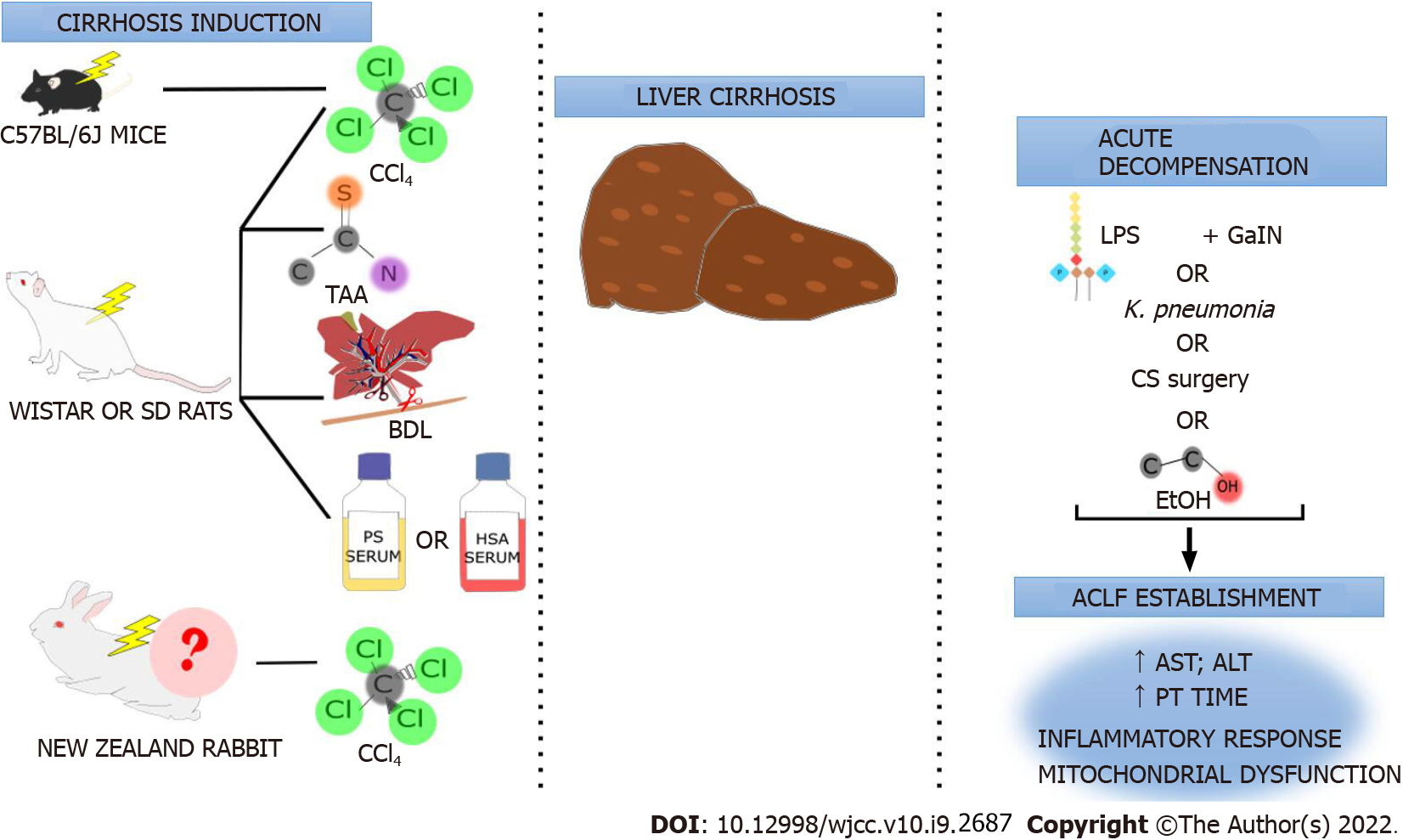Copyright
©The Author(s) 2022.
World J Clin Cases. Mar 26, 2022; 10(9): 2687-2699
Published online Mar 26, 2022. doi: 10.12998/wjcc.v10.i9.2687
Published online Mar 26, 2022. doi: 10.12998/wjcc.v10.i9.2687
Figure 1 Acute-on-chronic liver failure animals models based on a literature review.
Liver injury models applying chemical, biological and surgery induction leading to cirrhosis and subsequent acute decompensation with lipopolysaccharide or Galactosamine hydrochloride or both associated, Klebsiella pneumonia i.p. injection or Ethyl alcohol (EtOH), and CS surgery to Acute-on-chronic Liver Failure (ACLF) induction in rats or acute decompensation with EtOH in mice. Intense fibrosis and Aspartate aminotransferase, Alanine aminotransferase serum levels, an inflammatory response and impairment of mitochondrial function are observed. Unclear and non-reproducible data concerning the ACLF rabbit model induced by Carbon tetrachloride are described. SD: Sprague Dawley; HAS: Human albumin serum; PS: Porcine serum; TAA: Thioacetamide Administration; CS: Cecal slurry; BDL: Bile duct ligation; CCl4: Carbon tetrachloride; AST: Aspartate aminotransferase; ALT: Alanine aminotransferase; PT: Prothrombin time; ACLF: Acute-on-chronic liver failure.
- Citation: Gama JFG, Cardoso LMDF, Lagrota-Candido JM, Alves LA. Animal models applied to acute-on-chronic liver failure: Are new models required to understand the human condition? World J Clin Cases 2022; 10(9): 2687-2699
- URL: https://www.wjgnet.com/2307-8960/full/v10/i9/2687.htm
- DOI: https://dx.doi.org/10.12998/wjcc.v10.i9.2687













